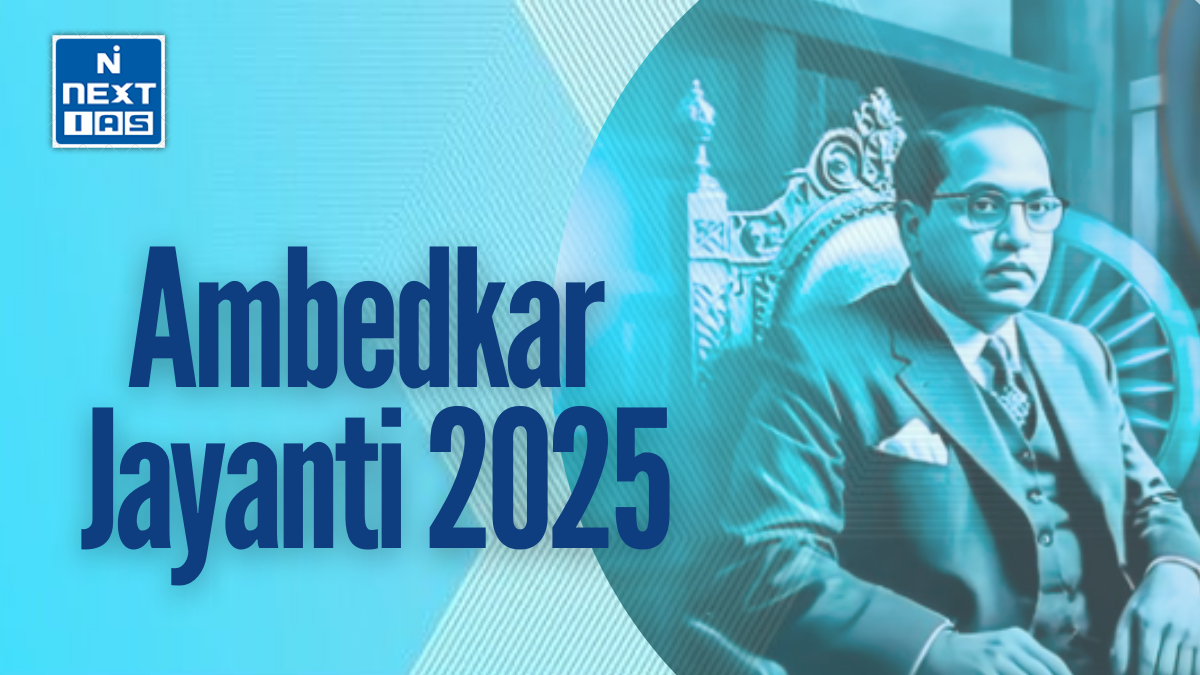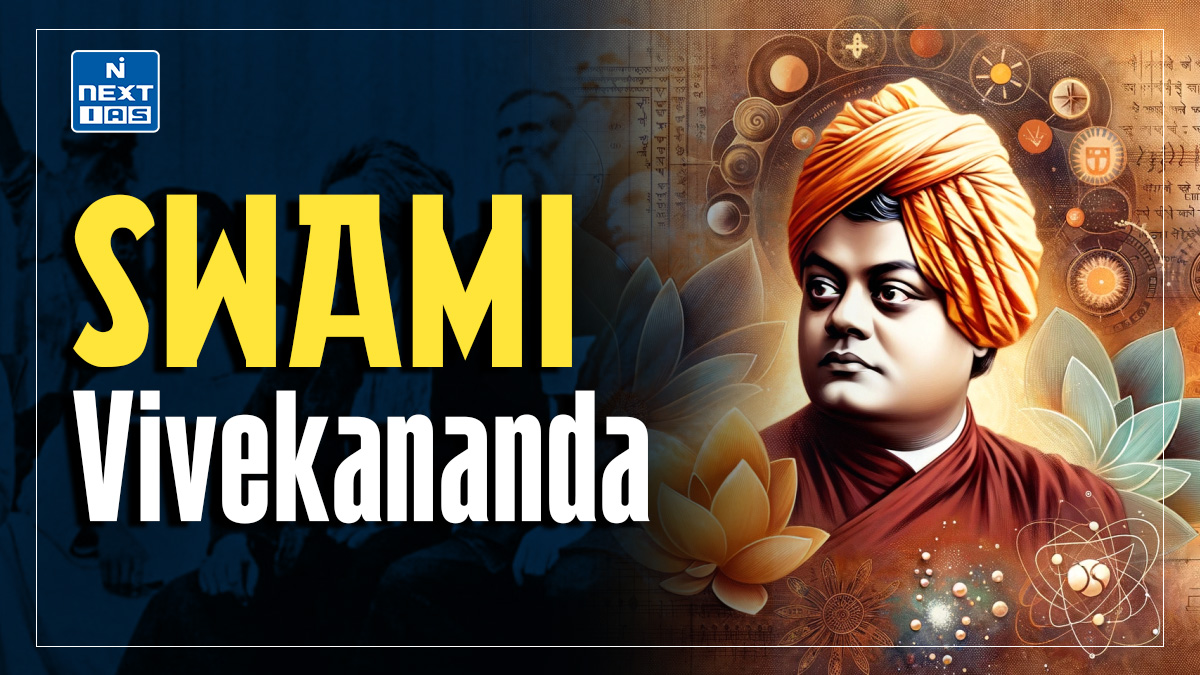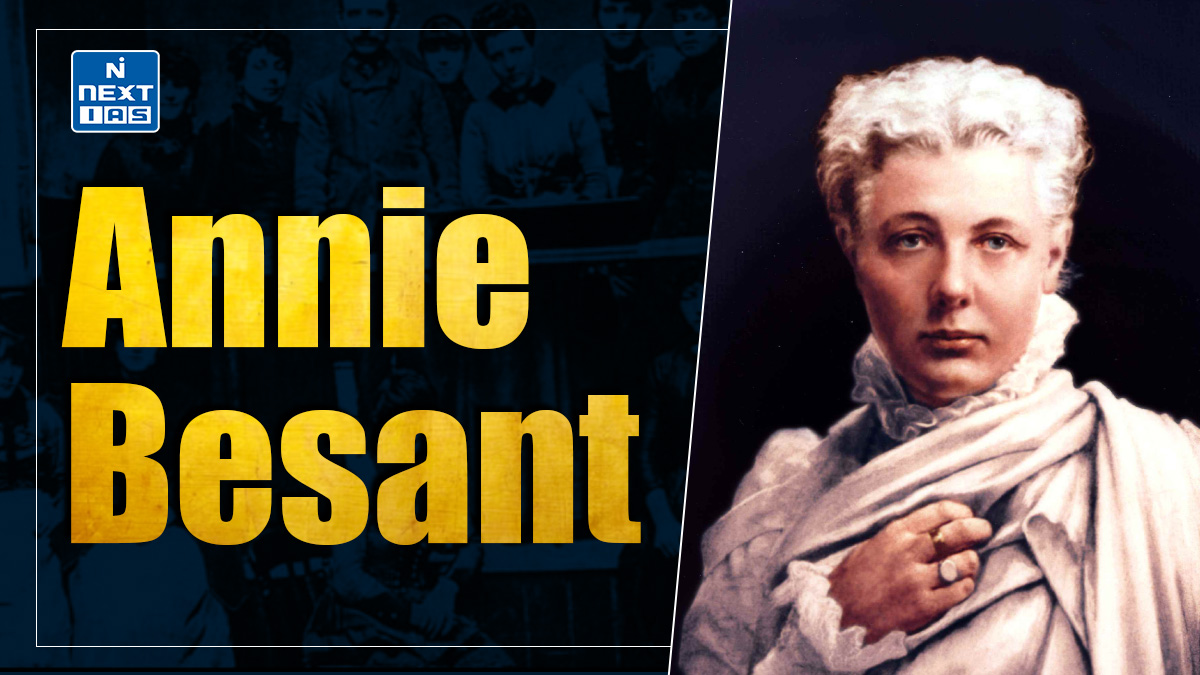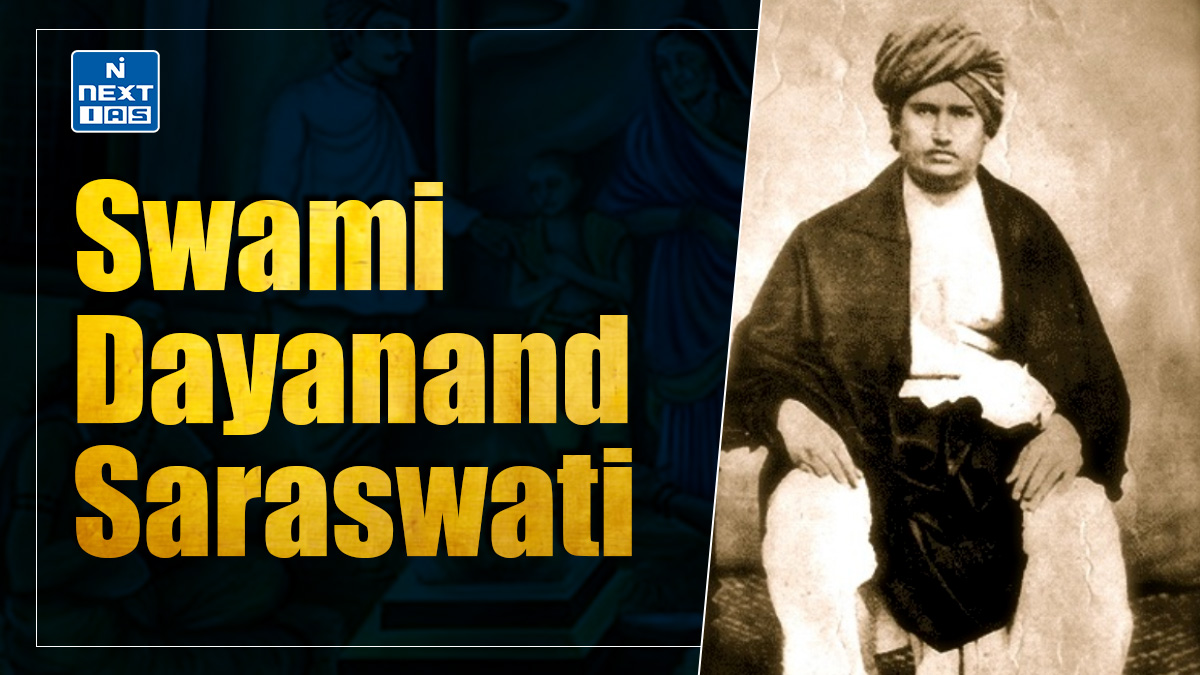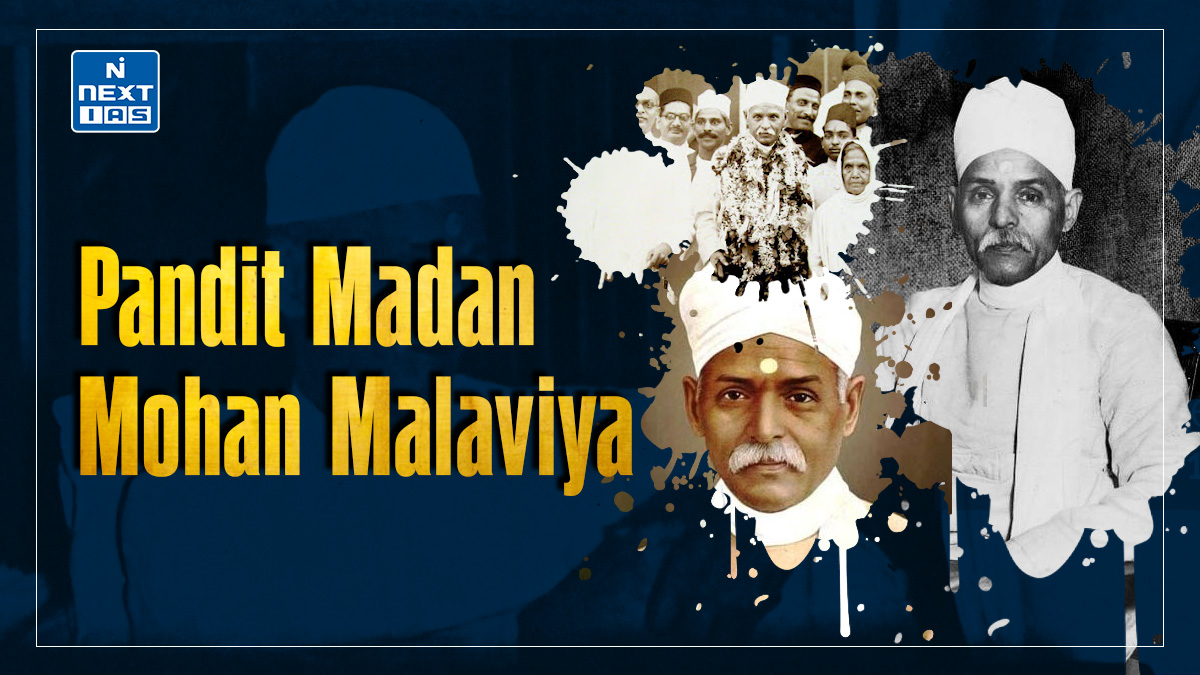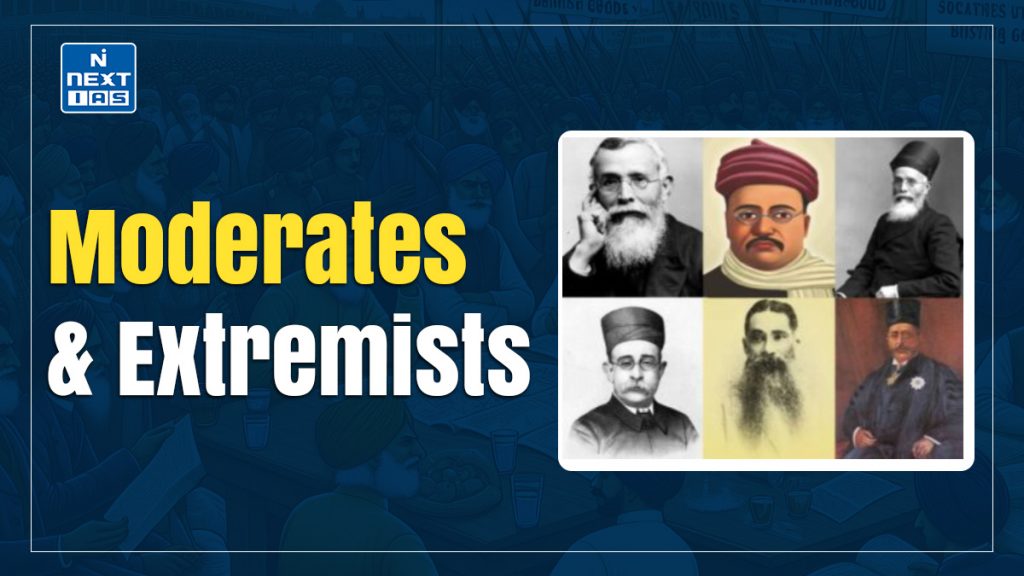
The conflict between the Moderates and Extremists in the Indian National Congress highlighted two distinct approaches to India’s freedom struggle. The Moderates, led by figures like Dadabhai Naoroji and Gopal Krishna Gokhale, believed in gradual reforms and constitutional methods, focusing on petitions, dialogue, and legal channels to achieve political rights. In contrast, the Extremists, represented by leaders like Bal Gangadhar Tilak and Bipin Chandra Pal, called for direct action and mass mobilization, emphasizing the Swadeshi movement and boycotts of British goods. While their ideologies differed, both groups contributed significantly to shaping the national movement, with the Moderates laying the foundation and the Extremists bringing urgency and mass participation to the struggle.
About Moderates
- The first twenty years of Congress politics, marked by their style, are referred to as moderate politics, and Congress members during this period are roughly labelled as Moderates.
- According to its critics and some historians, Congress at that time was hardly a full-fledged political party and more in nature of an annual conference.
- The Moderates, Surendranath Banerjee, Dadabhai Naoroji, W.C Bonnerjee, M.G. Ranade, Pherozeshah Mehta, Gopal Krishan Gokhale, among others, were primarily influenced by Utilitarian (benefit of majority) theories.
- Their politics was minimal in terms of goals and methods. They sent prayers and petitions, made speeches and published articles.
- Their political outlook can be explained as a combination of liberalism and moderation.
- They believed in the policy of gradualism and constitutionalism. Although secular in their attitudes, they were not always forthright enough to rise above their sectarian interests.
- They were conscious of the exploitative nature of the British rule but wanted reform of the “un-British” rule and not its expulsion.
- Moreover, they had intrinsic faith in the providential nature of British rule in India; they hoped that one day, they would be recognised as partners and not subordinates in the affairs of the empire and given the rights of full British citizenship.
Major Demands of Moderates
Major demands made by the Moderates during the period were as follows:
Constitutional Demands
- Abolition of the Indian Council, which prevented the Secretary of State from initiating liberal policies in India.
- Broadened Indian participation in legislatures through expansion of the central and provincial parliament.
- New councils for North-Western Provinces and Punjab.
- Also wanted two Indian members in the Viceroy’s Executive Council and one such member in each of the executive councils of Bombay and Madras.
- The budget is to be referred to the legislature, which should have the right to discuss, vote on, and interpret it.
Administrative Demands
- Indianisation of the civil services to make it more responsive to Indian needs; stop draining money; simultaneous civil services examinations in both India and London; and raising the maximum age for appearing in such exams from 19 to 23 years.
Economic Demands
- Reduction of expenditure and taxes.
- A reallocation of military charges.
- A protectionist policy to protect Indian industries.
- Reduction of land revenue assessment.
- Extension of Permanent Settlement to Ryotwari and Mahalwari areas.
- Encouragement of cottage industries and handicrafts.
Military Demands
- The British government should evenly share military expenditure.
- Indians should be allowed to volunteer in the army.
- More and more Indians should be appointed in higher ranks.
Education Demands
- They demanded an extension of primary education, a broadening of secondary education, and maintenance of higher education at its highest possible level.
- Particular emphasis was to be laid on technical education for Indians.
Other Demands
- They demanded an extension of trial by jury.
- They also demanded the repeal of the Arms Act.
- Abolition of Salt tax
However, these demands still needed to be fulfilled. They remained largely unrealised.
The most significant contribution of the Moderates was their economic critique of colonialism, which is sometimes referred to as economic nationalism.
Economic Nationalism
- Of all the nationalist movements in colonial countries, the Indian national movement was most deeply and firmly rooted in an understanding of the nature and character of colonial economic domination and exploitation.
- This understanding became a major theme in the subsequent period and even influenced the economic policies of the Congress government in Independent India.
- This economic nationalism was premised on Indian poverty, created by the application of the classical economic theory of free trade on one end and the drain theory, which sought to explain the drainage of wealth from India to Britain in the form of payment of home charges, military charges, and guaranteed interest payments on railway investments on the other.
- According to Dadabhai Naoroji, the drainage of wealth amounted to about 12 million pounds per year and 30 million pounds, according to William Digby, directly impoverished India and stultified the capital formation process.
- It was argued that British colonialism, through its less visible methods of exploitation (free trade and foreign capital investment), had turned India into a supplier of agricultural raw materials and foodstuffs to Britain and a consumer of manufactured goods from Britain.
- Thus, India had been reduced to a dependent agrarian economy and a field for British capital investment.
- The moderates also highlighted the overburdening of agriculture and impoverishment due to the destruction of the handicraft industry, mainly because of its inability to compete with industry-manufactured goods, high land revenue demand induced land alienation and impoverishment of the peasantry.
- This construction of economic critique of colonialism and linking it to Indian poverty attempted to corrode the moral authority of colonial rule and challenge the whole concept of paternalistic imperialism or British Benevolence.
The Extremists
Many causes have been cited to explain the rise of Extremists, which developed mainly in three main regions under three important leaders, viz. Bipin Chandra Pal is in Bengal, Bal Gangadhar Tilak is in Maharashtra, and Lala Lajpat Rai is in Punjab. The reasons are as follows:
- Dissatisfaction with the Moderates: Frustration with moderate politics and their inability to fulfil their demands was the major reason for the rise of extremist reactions. The younger generation became impatient with the slow-paced and gradual approach of the older Moderate leaders.
- True Nature of British Rule: The Moderates’ economic critique of British colonialism and linking it with the country’s poverty corroded the myth of British benevolence among educated Indians and exposed the exploitative nature of British rule.
- This realisation generated anger against British rule and dissatisfaction with the Moderates, giving rise to new radical politics.
- Factionalism: At the turn of the century, faction fighting was observed at almost every level of organised public life in India.
- There was a division in Brahmo Samaj in Bengal and a bitter journalistic rivalry between two newspapers, Bengalee, edited by Surendranath Banerjee and Amrita Bazar Patrika of Motilal Ghosh.
- In Maharashtra, there was a competition between Gokhale and Tilak to control the Poona Sarvajanik Sabha.
- In Punjab, Arya Samaj was divided after the death of Dayananda. The emergence of Extremists has also been explained as the result of this factional fighting in Congress.
- International Influences: Several contemporary international events exploded the myth of European superiority.
- Abyssinia’s (Ethiopian) repulsion and defeat of the Italian Army in 1896 and Japan’s thumping victory over Russia in 1905.
- Further, the period witnessed the rise of revolutionary movements in Russia, Egypt, Turkey, and China, which, along with the Boer War in South Africa, convinced the new generation of nationalists that the most powerful of the despotic governments could be challenged collectively.
- Curzon’s Reactionary Policies: Several unpopular administrative policies introduced by Lord Curzon (1899-1905) hurt the susceptibilities of the educated Indians.
- It included the reconstitution of the Calcutta Corporation by the Calcutta Municipal Amendment Act (1899), Delhi Durbar (1903), Indian Universities Act (1904) and Indian Official Secrets Amendment Act (1904).
- The final blow came with the partition of Bengal (1905). Apart from creating resentment, these policies made Indians realise that the British government took away a few existing rights instead of giving them broader political rights.
Conclusion
The rise of Moderates and Extremists in the Indian National Congress reflected the evolving political consciousness of the Indian population. While the Moderates sought reforms within the framework of British rule, the Extremists demanded more assertive measures to challenge colonial policies. This division not only shaped the course of Indian politics but also influenced the strategies of the Indian independence movement in the years to come. Ultimately, the differences between these two factions played a significant role in developing a united, though diverse, nationalist movement in India.
GS - 1